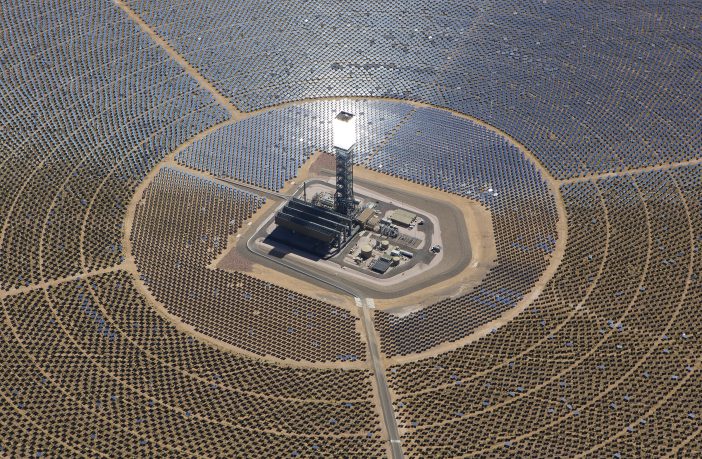- Concentrating solar power plus thermal energy storage (CSP+TES) could be cost-competitive with battery storage for achieving a low-cost, 100% renewables grid in the continental United States, researchers have found.
For seasonal storage, power-to-gas-to-power had lower costs than CSP+TES. The researchers used a simple model of the grid that assumed free lossless transmission across the continental United States. They said that their results could guide future studies using more detailed models, and expected that a model realistically representing transmission would not fundamentally alter the relative roles of the generation and storage technologies they evaluated. The study was published in the journal Advances in Applied Energy.
With CSP, mirrors direct sunlight onto receivers containing a heat transfer fluid, and the heat is used to run a steam turbine. Adding thermal energy storage allows electricity to be generated later.
CSP alone costs more than solar PV, and when researchers ran the model without TES, it selected no CSP. But TES costs less than battery storage, and when TES is added to CSP, the technology combination becomes competitive with batteries, the study found. The system cost savings of adding CSP+TES to a system with batteries was slight, at only $0.07/kWh.
For increased uptake of the combined technology, cost reductions for CSP would be more important than cost reductions for TES. Yet ongoing cost reductions for batteries, as projected by the National Renewable Energy Laboratory (NREL), would counter increased uptake of CSP+TES.
With power-to-gas-to-power (PGP) technology, renewable power is used to generate hydrogen from water, using electrolyzers. The hydrogen is later used to generate electricity using fuel cells, in the approach modeled by the researchers.
Seasonal storage needs in a 100% renewables grid were met with PGP storage capacity reaching 89,000GWh, the model showed. Short term-storage, typically with daily cycling, was met with far less capacity: 620GWh of thermal energy storage capacity, supplying 0.6% of total electricity supply, and 350GWh of battery storage capacity.
Demand response was represented in the model by allowing the system to supply less than the historical use profile “by paying a high cost.” Efforts to increase demand flexibility “could minimize the value” of CSP+TES, the authors said.
When methane gas units at varying percentages of generation were permitted, in a sensitivity analysis, the model selected batteries when methane gas generation was reduced to 5%, selected PGP with methane gas at or below 2%, and selected CSP+TES with methane gas at or below 0.1%.
The open-access article presents all cost elements for the generation and storage technologies considered. It is titled “The role of concentrated solar power with thermal energy storage in least-cost highly reliable electricity systems fully powered by variable renewable energy.”
Author: William Drisco
This article was originally published in pv magazine and is republished with permission.















